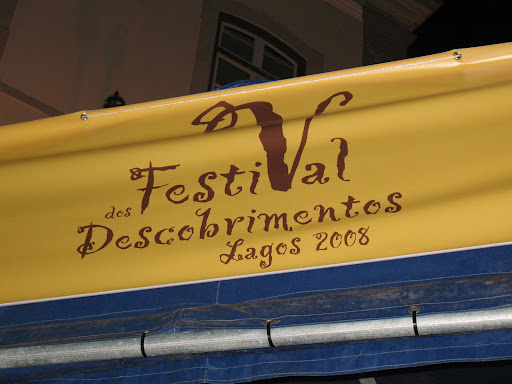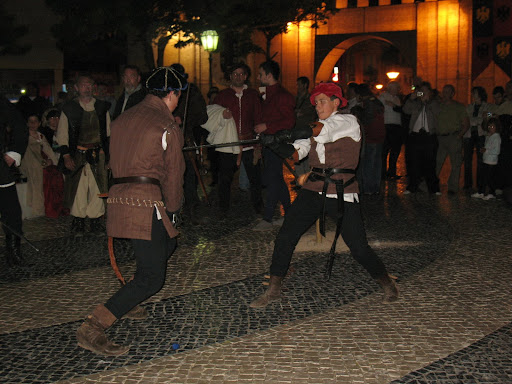





 The next day, we walked around the marina and checked out all of the boats that were docked there.
The next day, we walked around the marina and checked out all of the boats that were docked there.






 The bad thing about walking 6 kilometers to get somewhere is that eventually you have to turn around and go back the way you came, walking another 6 km.
The bad thing about walking 6 kilometers to get somewhere is that eventually you have to turn around and go back the way you came, walking another 6 km. Once we made it back to town, we made our way to the Fortaleza de Sagres. The fortress is blank, hulking and much like a prison, but the views out over the sheer cliffs and along the coast to Cabo São Vicente. (In the very last picture, you can see where we just walked from at Cabo de São Vicente.)
On the southern end of the fortress is a lighthouse, and daring fishermen balance on the cliffs below the walls in hopes of landing a juicy bream or sea bass.



 Once we made it to Cabo de São Vicente, we were relieved to be done with the 6km trek that it took to get out there. However, it was well worth it to see the barren terrain of the cape. Historically, it was the last glimpse of home for nervous Portuguese sailors as they set sail for uncharted territories.
Once we made it to Cabo de São Vicente, we were relieved to be done with the 6km trek that it took to get out there. However, it was well worth it to see the barren terrain of the cape. Historically, it was the last glimpse of home for nervous Portuguese sailors as they set sail for uncharted territories. At the end of the cape is a red lighthouse which is used to guide hundreds of ocean-bound ships rounding this point every day. In fact, Henry the Navigator’s house is believed to have been in a small castle to the right of the lighthouse.
Even though the cliffs along the cape are some 20 meters or so high, talented local fishermen post up and fish the surrounding waters. They fight the wind and manage to sink their hook into the frigid water down below. If you look closely in the second picture at the top of the cliff, there were a couple of old men who seemed to be having a pretty good day catching lots of fish.




 That night after we had dinner we heard some drums in the street and followed our ears to see what was going on. There on the main plaza in Lagos was a growing crowd of onlookers to witness a dramatic reenactment of a medieval sword fight to celebrate the Feria dos Descubrimentos (Holiday of the Discoveries), which conmemorates Portuguese exploration and colonization during the XV and XVI centuries.
That night after we had dinner we heard some drums in the street and followed our ears to see what was going on. There on the main plaza in Lagos was a growing crowd of onlookers to witness a dramatic reenactment of a medieval sword fight to celebrate the Feria dos Descubrimentos (Holiday of the Discoveries), which conmemorates Portuguese exploration and colonization during the XV and XVI centuries.
